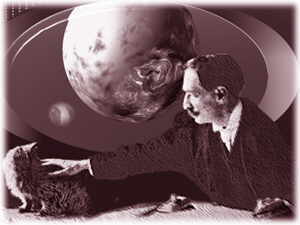One parsec is equal to about 3,26 light years, which probably makes it humankind’s largest unit of measurement. Expanses that can readily be measured only in parsecs are the territory of many science fiction writers. Thanks to the stories they weave into such a vast fabric of dark vacuum pricked by lonely bursts of light, we gain an inkling of the enormity of the universe - and our infinitesimal place in it. The German philosopher, Friedrich Nietzsche, said in 1873: "In some remote corner of the universe, effused into innumerable solar systems, there was once a star upon which clever animals invented cognition. It was the haughtiest, most mendacious moment in the history of this world, but yet only a moment. After Nature had taken breath awhile, the star congealed and the clever animals had to die." His critical views on the human species may be disagreeable to some, but Nietzsche pointed out the true context, in space and time, of the story of the human species. Science fiction writers thrive on such magnitude. Many of them seem to say that if the cosmos is so vast, and our place in it so small, surely we should open the door and explore what lies beyond this broom closet in the celestial mansion. And explore it with their minds, using the latest discoveries in physics and astronomy, they do. And the best of them use such explorations as backdrops for telling poetic, philosophical and passionately human stories that remind us of what we are, and what we can be. Rupert Neethling, Cape Town, South Africa
|
